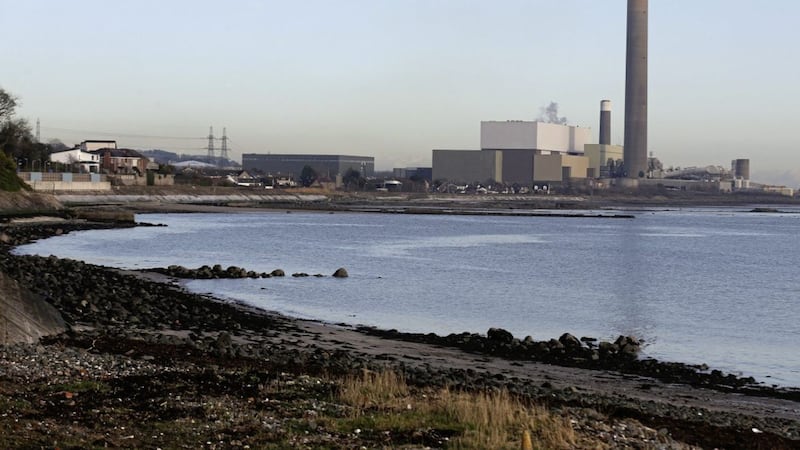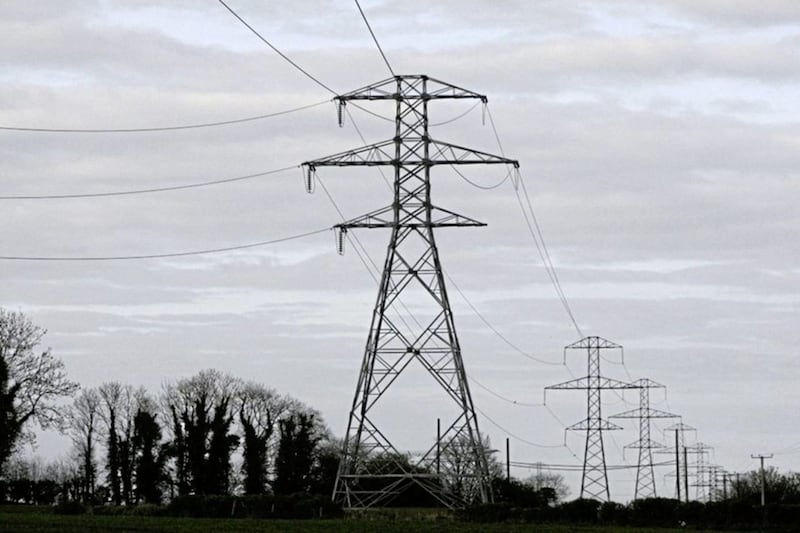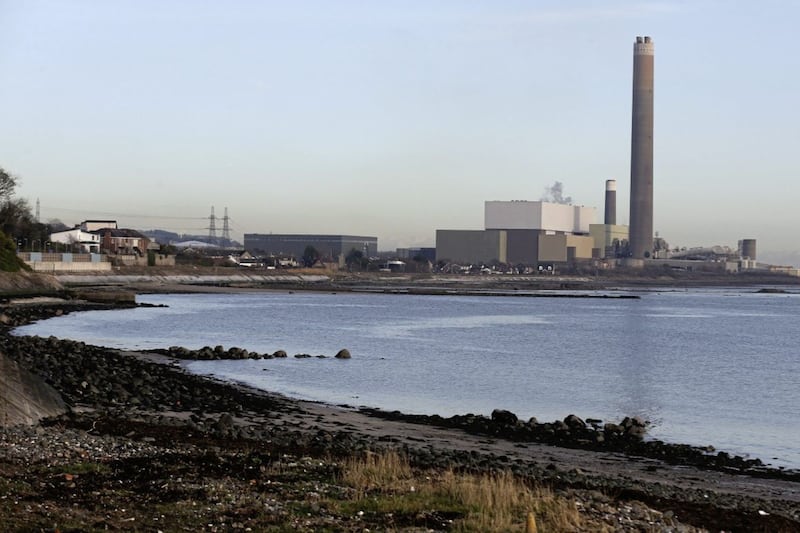IT’S an ill wind that blows nobody any good. I often think of that old saying now the country is festooned with turbines. Last Friday saw record breaking amounts of renewable power on the Northern Ireland grid as an Atlantic low swept in. The system operator SONI proudly published a pie chart showing three quarters of the electricity being generated here coming from wind.
The diagram unintentionally but neatly pointed to the other rather bigger power story of the day - the future of Kilroot, because it revealed that even as renewable energy was crowding the system, there still was a role for coal which was supplying close to ten per cent of output.
The giant generators in Kilroot aren’t just useful because they help close the gap between what wind turbines can supply and what’s needed to keep the lights on. They provide inertia. Now don’t think of inertia as simply the tendency to stay still, it’s also what’s keeps things going that are already moving.
You need inertia, lots of it, in an electricity system which has rapidly fluctuating levels of renewable power. By instructing power stations like Kilroot to tap into the inertial forces of their spinning turbines, SONI is able to maintain a stable frequency and prevent the lights from flickering and worse when wind power rises and falls. If you want an analogy, think of inertia as the shock absorber of the system.
And then there’s protection against a doomsday scenario which Kilroot can also provide. Say there’s a blackout so widespread that a power station has to start up without access to an external source of electricity to jolt it into action. Because, believe it or not, some power stations need power to get going. In that scenario Kilroot can bootstrap itself into action. It can do a black start. Again if you want an analogy, Kilroot stocks jump leads and a spare battery.
By the way there is a point to this junior physics lesson which I’ll come to shortly.
All the above would have been only of academic interest if AES had been willing to keep Kilroot open despite the fact that its two ageing coal burning generators, K1 and K2, had failed to win contracts in the new capacity auction. But AES wanted to shut down those units plus two more at Ballylumford, B4 and B5, even though the former had won a sizeable contract in last December’s capacity auction.
The Utility Regulator asked SONI to assess what closure would mean over the next three years. SONI reported that a wholesale shutdown would risk leaving the system short of inertia provision next summer. That’s when the 600MW Ballylumford C Station is due to enter a planned outage. Clearly all the units marked for mothballing by AES could not close.
Reinforcing its case, SONI pointed out, in the event of a doomsday shutdown of the transmission system, it had always been counting on access to black start services at Kilroot to restore power. For those two reasons SONI said it needed one of the coal fired units at Kilroot to make up the shortfall in system support services.
But a single generator at Kilroot wasn’t going to be sufficient on its own to meet all SONI’s needs. The capacity auction results had made it clear from as early as January that the system operator would need B4 on standby to keep the lights on.
This threw up a conundrum. Only one big AES unit had won a contract but two ended up being necessary to make the system secure. If anyone was hoping that AES would be happy keeping a second unit available to provide system services as required without a guaranteed income, they were mistaken. To bolster their case, AES pointed to a clause in the Energy Order which seemingly required the Regulator to ensure that any unit the system needed was financially viable. A deal was looking inevitable.
In the ways these things are divided up, the shortfall in inertia and black start services was a matter for SONI to sort out. After weeks of debate, AES and SONI finalised their negotiation. It worked like this. A one year £14m contract was agreed between SONI and AES for system support services which would be supplied by the K1 unit at Kilroot.
The recovery of costs involved which has been approved by the Utility Regulator will add £6 to the average annual household electricity bill. It will increase the typical power bill for businesses by 1.5 per cent. The deal allowed the Utility Regulator to permit B4 and B5 at Ballylumford to shut in due course. Around 85 jobs are likely to go. Another important element in the overall deal was the agreement to switch the £11.5m contract for B4’s capacity to K2.
The fact that no new capacity was commissioned enables the Regulator to argue that the capacity auction results remain intact. In that sense it worked as planned. But looked at from another angle, the outcome of the auction left Kilroot out in the cold when one of its units was actually required to supply vital black start services. Would it be better to operate the capacity auction to take into account the need for critical system support services instead of negotiating the issue later? It’s for others to say.
That aside, customers must take some comfort from the capacity auction’s promised savings of €50 million a year. Even if they hadn’t reckoned on a £14m payment to AES, they’re still well ahead of the game. Not only that, in defiance of the sceptics, I-SEM is working. Who said progress was easy?
:: Jamie Delargy (delargyco@btinternet.com) is a freelance business broadcaster and commentator.







